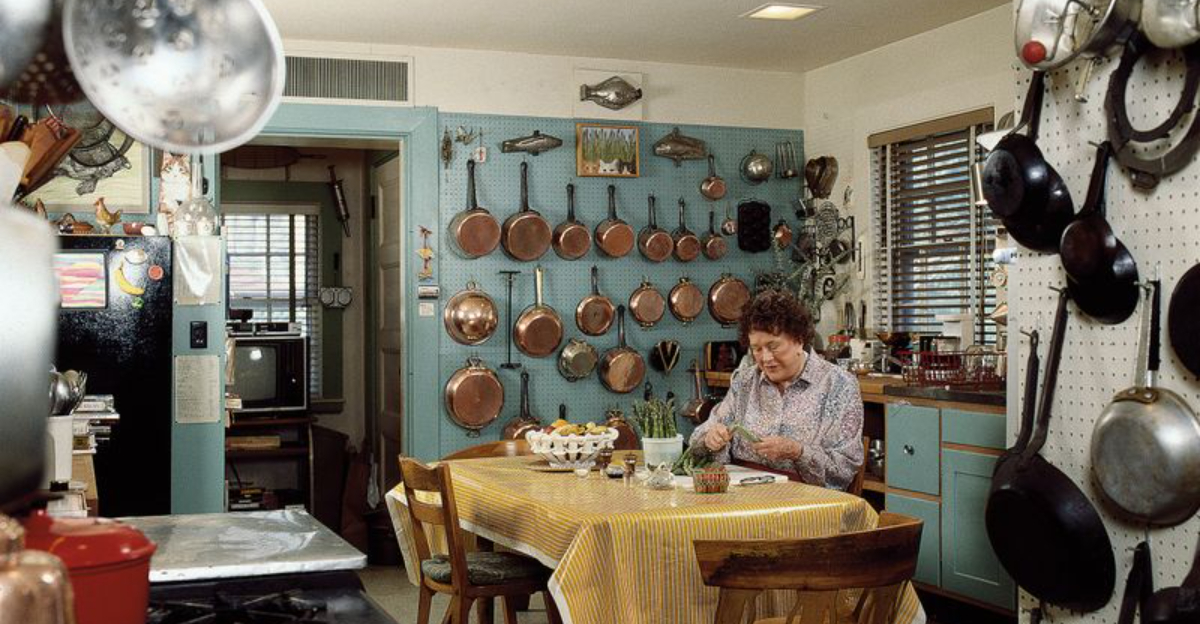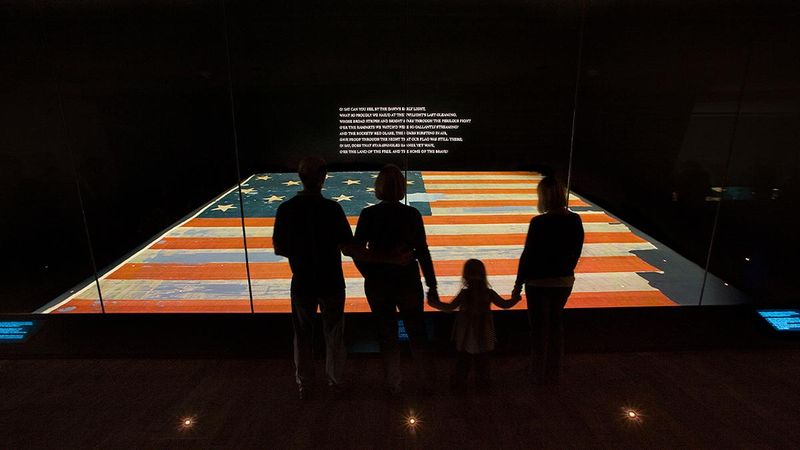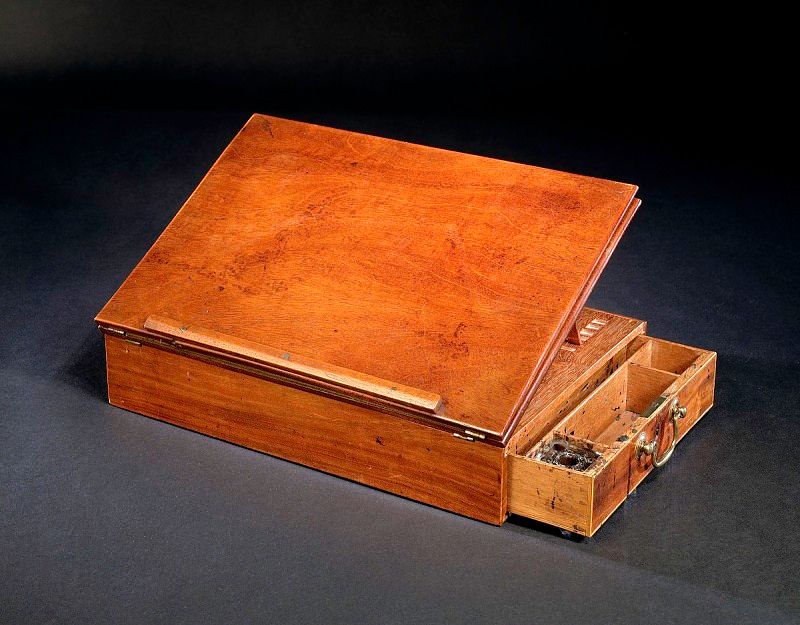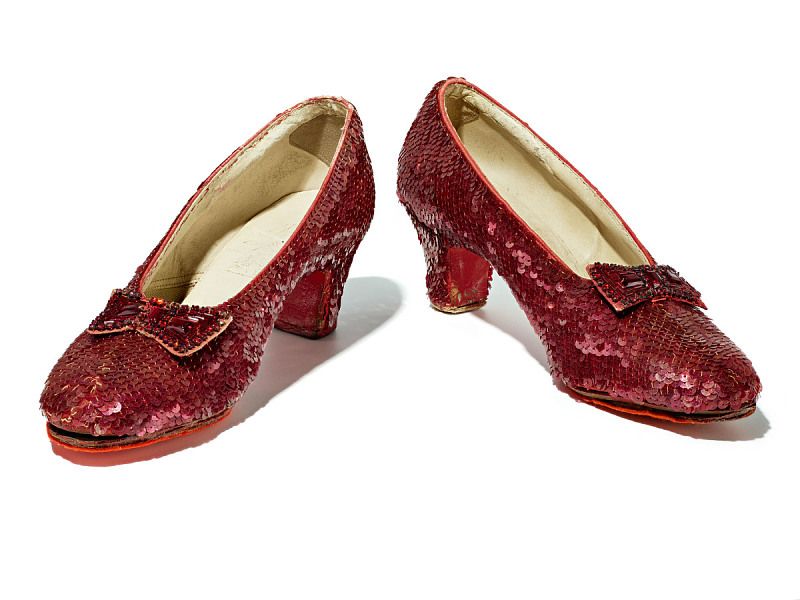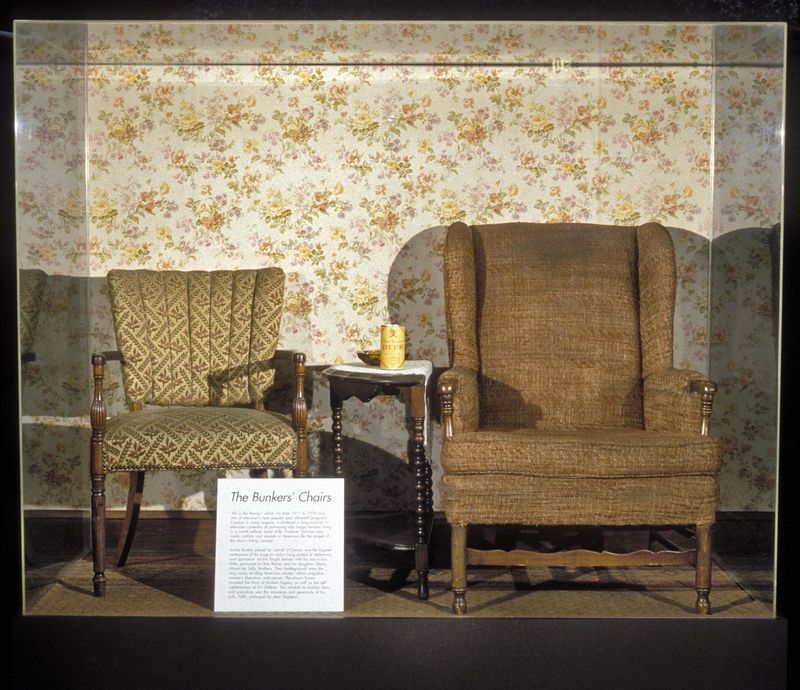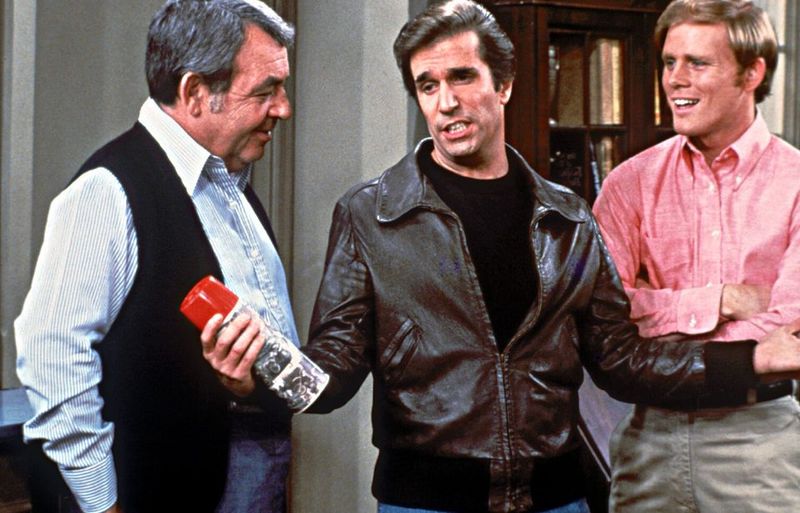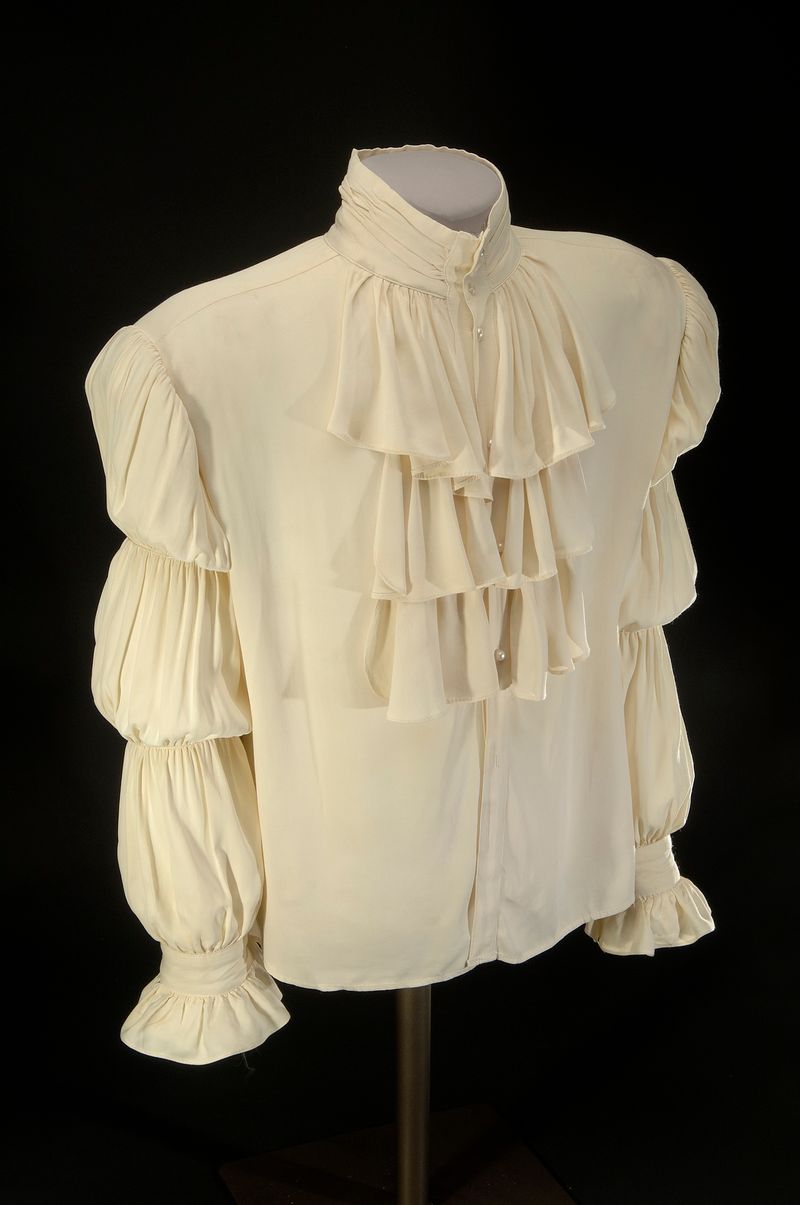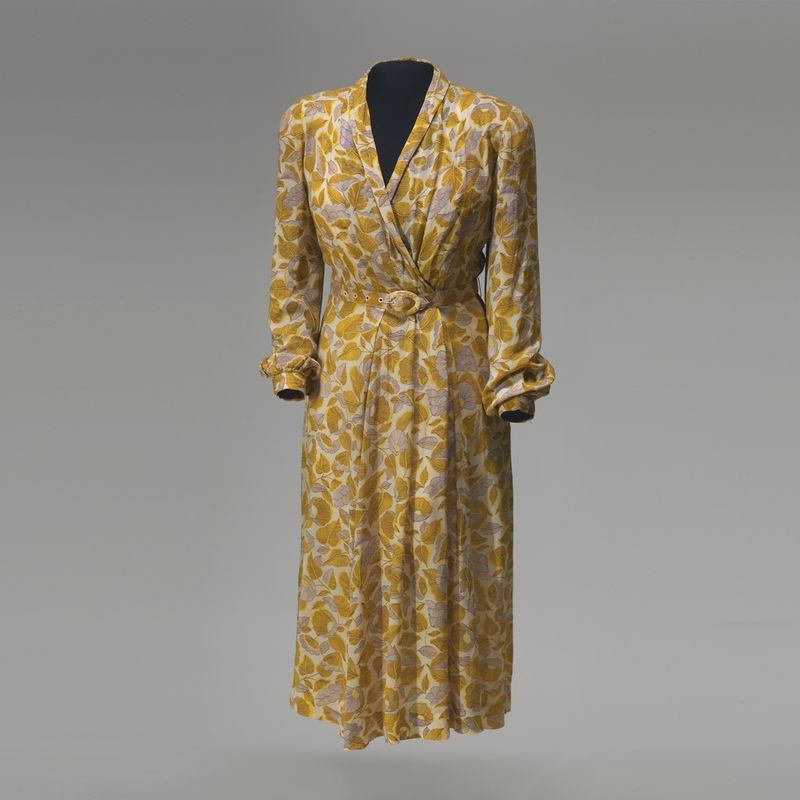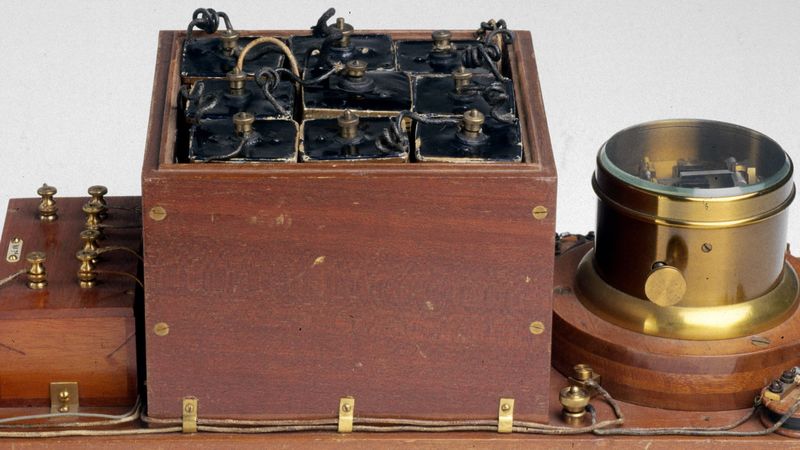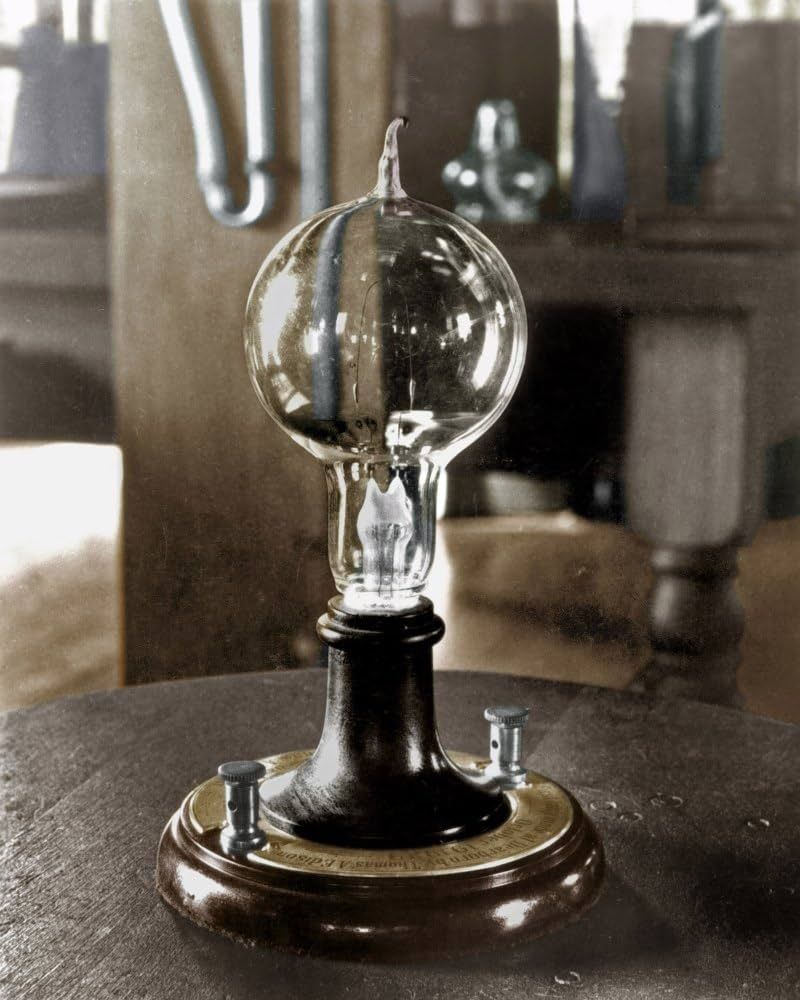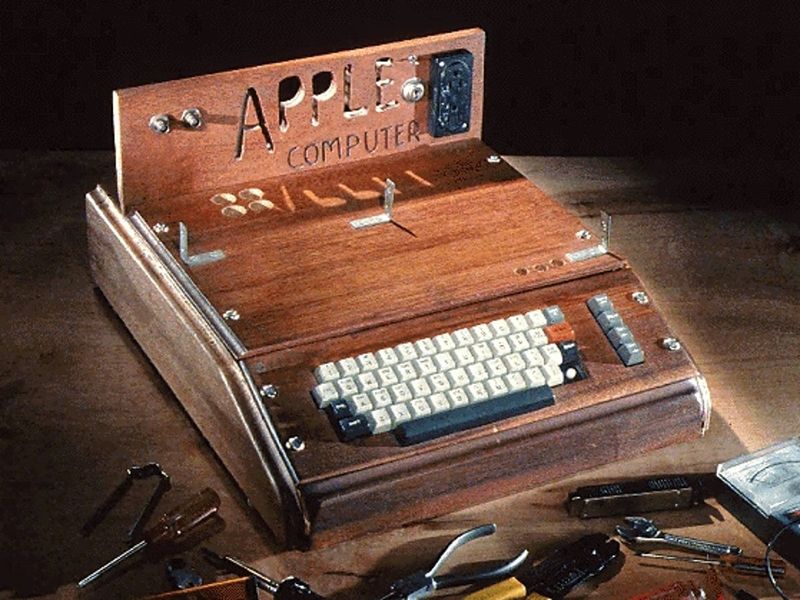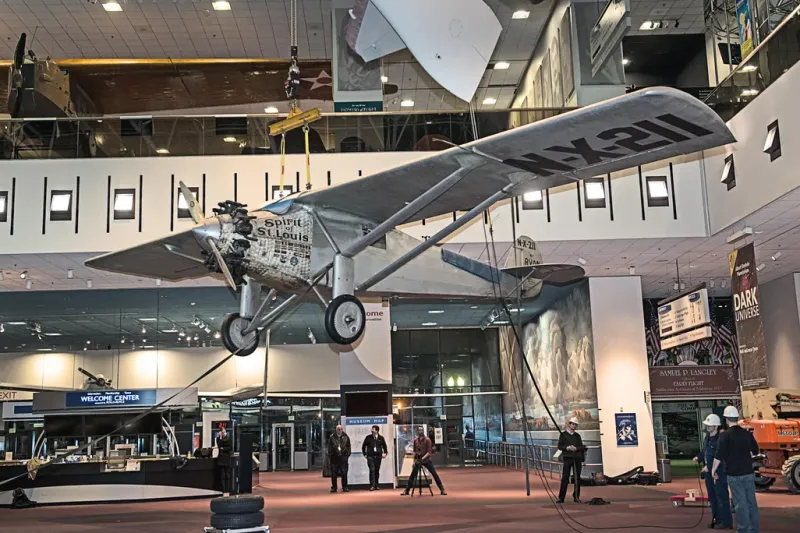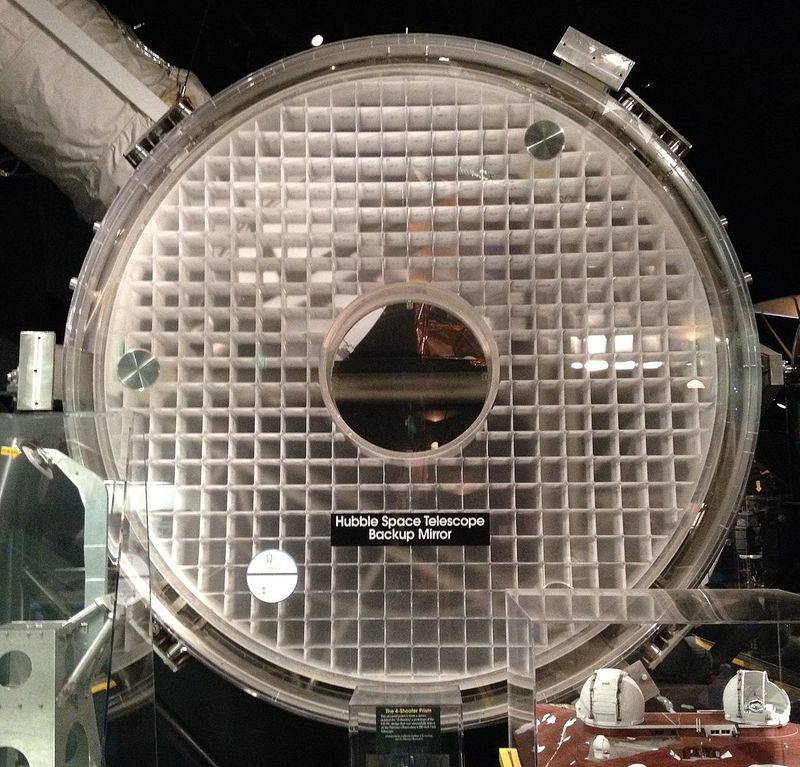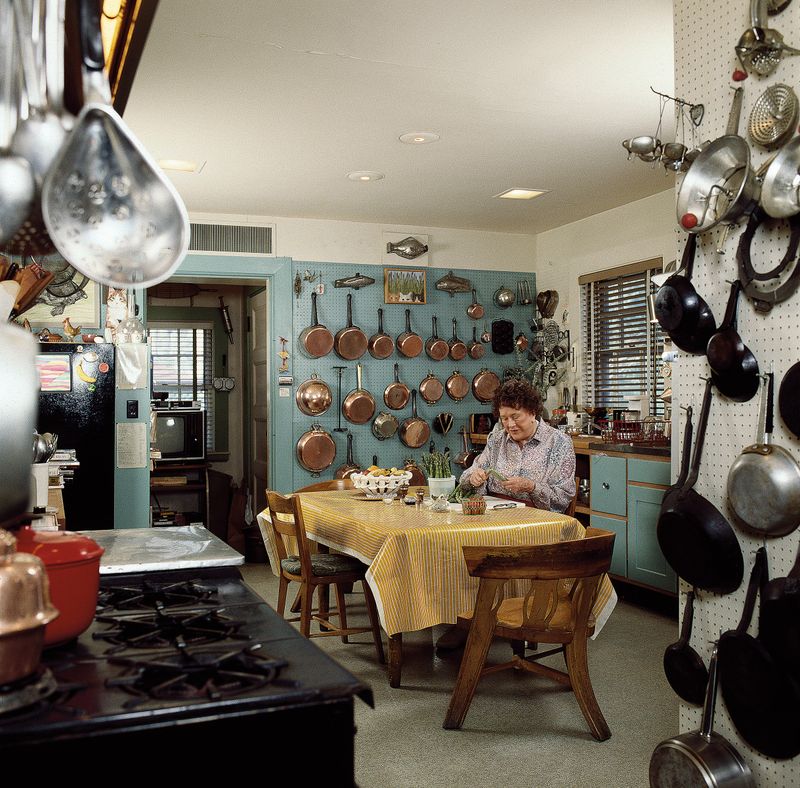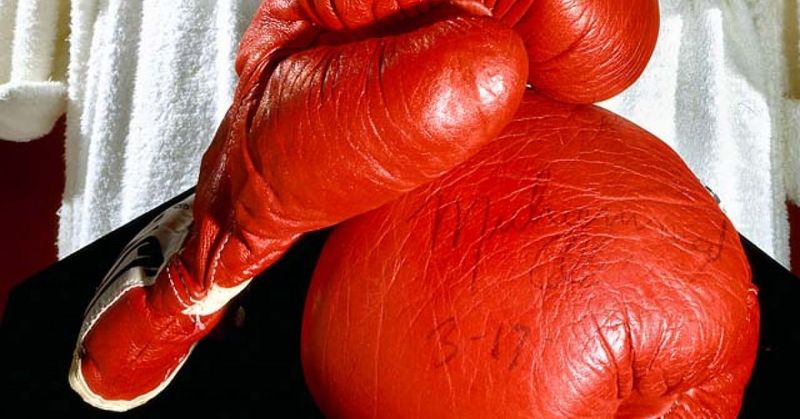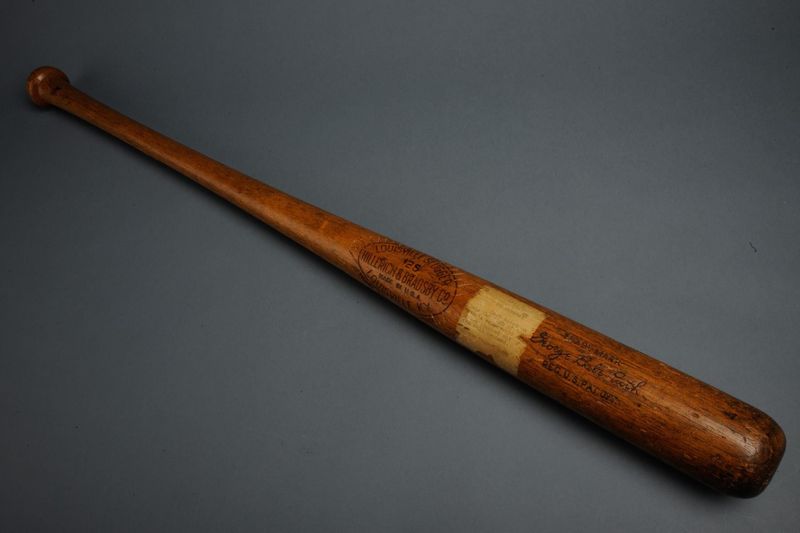The Smithsonian museums hold America’s most cherished treasures, each telling a unique story about our nation’s history, culture, and innovation.
From revolutionary war relics to pop culture icons, these artifacts capture the essence of American identity across generations.
Walking through these museums feels like turning pages in America’s scrapbook – each item revealing something profound about who we are as a people.
1. The Star-Spangled Banner
Weathered and fragile, this massive 30×42-foot flag survived the British bombardment of Fort McHenry in 1814, inspiring Francis Scott Key to pen what would become our national anthem. Each carefully preserved fiber tells a story of perseverance.
Museum conservators spent years meticulously preserving this delicate symbol of American resilience. Now displayed in a special low-light chamber, the flag rests horizontally to prevent further deterioration.
The missing pieces? Some were snipped as souvenirs in the 19th century before anyone realized this battle-worn banner would become a national treasure.
2. George Washington’s Revolutionary War Uniform
Remarkably preserved, the commanding general’s wool uniform stands as a tangible connection to the birth of a nation. The dark blue coat with buff facings represents Washington’s deliberate rejection of flamboyant European military fashion for something distinctly American.
Tailored for a man standing over six feet tall, the uniform reminds us of Washington’s imposing physical presence. He wore this during crucial moments of the Revolutionary War, leading troops through bitter winters and hard-fought victories.
Every thread carries the weight of a revolution – from strategy meetings at Valley Forge to the final triumph at Yorktown.
3. Jefferson’s Portable Writing Desk
Words that birthed a nation flowed from this humble mahogany lap desk. Thomas Jefferson crafted the Declaration of Independence on this portable writing surface in 1776, penning ideals that would reshape world history.
Compact and ingenious in design, the desk features a folding top, drawer for supplies, and a locking mechanism – perfect for a man who valued both practicality and privacy. Jefferson gifted it to his grandson-in-law in 1825 with a handwritten note explaining its historical significance.
Visitors often stand transfixed before this simple wooden object, imagining Jefferson’s quill scratching across parchment: “We hold these truths to be self-evident…”
4. Lincoln’s Stovepipe Hat
Stains, scratches, and a mourning band tell silent stories on this iconic silk hat. Abraham Lincoln wore this very stovepipe hat to Ford’s Theatre on April 14, 1865 – the night an assassin’s bullet ended his life and changed the nation’s trajectory.
Standing 7 inches tall, Lincoln used his hat not just as fashion but as a portable filing cabinet, often tucking important papers inside the lining. The president’s hat added to his already towering 6’4″ frame, making him an unmistakable figure during the Civil War era.
Museum visitors often feel a chill seeing this personal item that witnessed one of American history’s most pivotal moments.
5. Frederick Douglass’s Walking Cane
Carved from polished wood with a gold-plated handle, this elegant walking cane belonged to one of America’s greatest champions for freedom. Frederick Douglass carried this cane while delivering powerful speeches that helped reshape the nation’s conscience about slavery.
Born enslaved, Douglass rose to become a brilliant orator, writer, and statesman. His personal effects – including this cane, writing desk, and eyeglasses – humanize a historical giant who escaped bondage to fight for liberty.
The cane represents both practical support and symbolic authority for a man who stood tall against America’s greatest moral failing, commanding respect in rooms where formerly enslaved people were rarely welcome.
6. Dorothy’s Ruby Slippers
Magical shoes that carried a Kansas farm girl home now rest behind protective glass as one of the Smithsonian’s most beloved treasures. These iconic sequined pumps from 1939’s “The Wizard of Oz” receive more visitor requests than almost any other artifact.
Designed by MGM’s costume department, the slippers aren’t actually ruby – they’re covered in burgundy sequins that appeared vibrant red under Technicolor cameras. Judy Garland wore several pairs during filming, but these show authentic signs of use from dance sequences on the yellow brick road.
Their enduring appeal speaks to the film’s powerful message: sometimes the magic you seek has been with you all along.
7. Kermit the Frog Puppet
A simple green sock transformed by Jim Henson’s imagination sits quietly now, yet somehow still radiates personality. The original Kermit puppet, crafted from Jim’s mother’s coat and ping-pong balls, launched a revolution in children’s entertainment that combined heart, humor, and artistry.
Before becoming the familiar felt amphibian we know today, early Kermit was more abstract – evolving alongside Henson’s vision for the Muppets. His distinctive collar was added later to hide the seam between head and body.
Museum staff report that visitors of all ages react emotionally to seeing Kermit, often spontaneously singing “Rainbow Connection” or sharing memories of growing up with this beloved character.
8. Archie Bunker’s Living Room Chair
Worn fabric and sagging cushions speak volumes about the man who claimed this throne. This unassuming armchair from the groundbreaking 1970s sitcom “All in the Family” became a powerful symbol as Archie Bunker’s personal territory – a place where actor Carroll O’Connor delivered lines that confronted America’s prejudices.
The show’s creator, Norman Lear, deliberately chose a shabby, dated chair to reflect Archie’s resistance to social change. From this seat, viewers watched a character struggle with evolving views on race, gender, and politics during a turbulent era.
Today, the chair represents how entertainment can become a vehicle for difficult national conversations about who we are and who we want to be.
9. Fonzie’s Leather Jacket
Cool personified – this brown leather jacket helped transform Arthur Fonzarelli into a cultural phenomenon. Actor Henry Winkler wore this exact jacket as “The Fonz” on ABC’s “Happy Days,” creating an enduring symbol of 1950s rebellious youth and effortless cool.
Originally, ABC executives wanted Fonzie in a cloth windbreaker, fearing a leather jacket would make him look like a hoodlum. The compromise? Fonzie could wear leather only when near his motorcycle – a rule quickly abandoned as the character’s popularity soared.
The jacket’s journey from costume department to national museum reflects how certain objects transcend entertainment to become authentic cultural touchstones that define an era.
10. Seinfeld’s Puffy Shirt
“But I don’t wanna be a pirate!” Jerry’s memorable protest echoes through television history alongside this ridiculous garment. The frilly white shirt from Seinfeld’s iconic 1993 episode perfectly encapsulates the show’s ability to transform mundane misunderstandings into comedy gold.
Donated by Jerry Seinfeld himself, the shirt symbolizes how ’90s sitcoms elevated everyday absurdity into art. The episode’s premise – Jerry accidentally agrees to wear a ridiculous shirt designed by Kramer’s “low-talking” girlfriend during a Today Show appearance – remains instantly recognizable to fans.
Museum curators note that visitors often laugh out loud upon spotting this artifact, proving great comedy transcends time.
11. Greensboro Lunch Counter
Four stools, a formica countertop, and courage that changed America. This eight-foot section of the original Woolworth’s lunch counter witnessed history on February 1, 1960, when four Black college students sat down and requested service, knowing they would be denied because of their race.
Their peaceful protest sparked a nationwide sit-in movement. What began with four students grew to include hundreds in Greensboro alone, eventually forcing Woolworth’s to desegregate its lunch counters after six months of economic pressure.
Museum visitors can now sit at this counter and listen to oral histories from civil rights activists, experiencing a pivotal moment when ordinary college students became extraordinary agents of change.
12. MLK’s “I Have a Dream” Speech Draft
Handwritten revisions and crossed-out lines reveal the human behind the icon. These working draft pages of Martin Luther King Jr.’s famous speech show how carefully he crafted the words that would electrify a nation gathered at the Lincoln Memorial in 1963.
Fascinating details emerge upon close inspection – the iconic “I have a dream” refrain doesn’t appear in early drafts. This powerful improvisation came when gospel singer Mahalia Jackson called out “Tell them about the dream, Martin!” during the speech.
Preserved behind special glass that protects against light damage, these pages capture a pivotal moment when aspirational language helped America envision a better version of itself – a vision still unfolding today.
13. Rosa Parks’ Dress and Handbag
Seemingly ordinary items that witnessed an extraordinary act of courage. The modest wool dress and handbag Rosa Parks carried on December 1, 1955, were with her when she refused to give up her bus seat in Montgomery, Alabama – a pivotal moment that launched the modern civil rights movement.
Parks wasn’t the first to resist bus segregation, but her quiet dignity and strategic importance to the NAACP made her case the catalyst for change. Her personal effects humanize a woman often reduced to a single moment, revealing the thoughtful activist behind the icon.
The careful preservation of these items reminds us how everyday objects can become sacred artifacts when they participate in moments that bend the arc of history toward justice.
14. Alexander Graham Bell’s First Telephone
“Mr. Watson, come here, I want you.” These first words transmitted through Bell’s crude device in 1876 inaugurated a communication revolution that continues reshaping human connection. The original prototype – a wooden box with simple electrical components – looks nothing like modern phones but changed everything about how we interact.
Bell was actually trying to develop technology for the deaf (his mother and wife were both hearing impaired) when he discovered how to transmit voice electronically. The liquid transmitter visible in the prototype shows Bell’s experimental approach, using acidic water to conduct electrical signals.
Standing before this humble invention, visitors contemplate how a single breakthrough can transform civilization in ways even its creator couldn’t imagine.
15. Edison’s Light Bulb
A glass bubble containing the spark of modern life. Thomas Edison’s early incandescent light bulb from 1879 appears deceptively simple – a glass sphere, carbonized bamboo filament, and copper wires – yet it illuminated humanity’s path into a brighter future.
Edison’s genius wasn’t just invention but innovation at scale. After testing thousands of materials, he discovered carbonized bamboo could burn for over 1,200 hours, making electric light commercially viable for the first time.
Modern visitors, surrounded by screens and LEDs, stand mesmerized by this fragile ancestor of our light-filled world. The bulb reminds us how a single persistent inventor can literally and figuratively enlighten civilization, creating technology we now take for granted.
16. Apple I Computer
Revolutionary technology in a wooden box. This rare Apple I computer from 1976 represents the humble beginnings of what would become the world’s most valuable company. Hand-built by Steve Wozniak in Steve Jobs’ parents’ garage, only about 200 were made, with fewer than 80 surviving today.
Unlike modern computers, the Apple I came as a bare circuit board – users needed to add their own case, keyboard, and display. This particular unit’s wooden housing reflects the DIY spirit of early personal computing, when enthusiasts built their own machines.
The contrast between this primitive computer and today’s sleek iPhones provides a powerful reminder of how rapidly technology evolves – and how visionary entrepreneurs can transform industries.
17. Spirit of St. Louis Aircraft
Suspended from the ceiling as if frozen in eternal flight, this single-engine Ryan monoplane carried Charles Lindbergh across the Atlantic in 1927, completing the first solo nonstop transatlantic flight in history. The plane’s silver body still bears its original registration: N-X-211.
Imagine the courage required to fly this tiny craft – with no forward visibility except through a periscope – for 33.5 hours straight! Lindbergh navigated by the stars, battled ice and fog, and stayed awake through sheer determination.
Custom-built for maximum fuel capacity, the Spirit sacrificed comfort for range. Lindbergh’s wicker seat remains in the cockpit, a humble throne for the man who conquered the Atlantic and became an international hero overnight.
18. Wright Brothers’ Flyer
Fragile wooden wings and fabric stretched over a precisely engineered frame – the 1903 Wright Flyer appears almost too delicate to have changed the world. Yet on December 17, 1903, this remarkable machine carried Orville Wright for 12 seconds above the sands of Kitty Hawk, North Carolina, making history’s first powered, controlled, sustained flight.
Bicycle mechanics by trade, the Wright brothers solved the puzzle of flight through methodical experimentation. Their breakthrough was three-axis control – pitch, roll, and yaw – principles still used in aircraft today.
Meticulously restored and preserved, the Flyer occupies the central position in the Air and Space Museum, a testament to human ingenuity and the power of persistence.
19. Neil Armstrong’s Apollo 11 Spacesuit
Scuffs of moon dust still cling to this extraordinary garment that protected the first human to walk on another world. Neil Armstrong’s A7L spacesuit from the historic Apollo 11 mission bears the American flag, NASA logo, and mission patch that became iconic symbols of humanity’s greatest adventure.
Designed to protect against the moon’s extreme temperatures (-280°F to +240°F), micrometeorites, and vacuum of space, the suit is actually 21 layers thick. The boots that left those famous footprints feature special treads designed specifically for the lunar surface.
Recently restored through crowdfunding, this suit represents not just American achievement but humanity’s boundless capacity for exploration and discovery.
20. Hubble Space Telescope Backup Mirror
Smooth, polished perfection – this full-scale backup mirror for the Hubble Space Telescope gleams under museum lights, representing one of humanity’s greatest scientific tools. Unlike the flawed primary mirror initially sent to space, this ground spare was correctly manufactured and serves as a reminder of engineering precision.
When Hubble launched in 1990, scientists discovered its main mirror had been ground incorrectly by just 1/50th the width of a human hair – enough to blur its vision. A daring space shuttle repair mission in 1993 gave Hubble the equivalent of corrective glasses.
Since then, Hubble has fundamentally transformed our understanding of the universe, revealing cosmic wonders across 13.4 billion light-years of space and time.
21. Julia Child’s Kitchen
Pegboard walls lined with precisely outlined cookware and a countertop set at extra height – Julia Child’s entire Cambridge kitchen has been lovingly reassembled at the Smithsonian. This is where the pioneering chef filmed three television series and tested recipes for numerous cookbooks between 1961 and 2001.
The kitchen reveals Julia’s practical nature and husband Paul’s ingenuity. He designed the pegboard system to keep tools organized, even drawing outlines so each item could be returned to its proper place. At 6’2″, Julia needed higher countertops for comfortable cooking.
Visitors delight in recognizing familiar elements from her shows – the same copper pots, blue KitchenAid mixer, and trusty knives that helped bring French cuisine to American homes.
22. Mister Rogers’ Red Sweater
Hand-knit with love by his mother, this zippered cardigan in cheerful red symbolizes comfort, kindness, and childhood for generations of Americans. Fred Rogers wore this exact sweater on episodes of “Mister Rogers’ Neighborhood,” changing into it during his famous opening routine to signal the transition into a space of imagination and learning.
Rogers purposefully chose bright, solid-colored sweaters after consulting with child development experts about what would appeal to young viewers. He maintained a collection in different colors, all made by his mother until her passing.
Museum visitors often report feeling unexpected emotion when seeing this simple garment – a testament to Rogers’ extraordinary impact on American childhood through gentle wisdom and unconditional acceptance.
23. Muhammad Ali’s Boxing Gloves
Everlast leather still cracked from the impact of history’s most famous boxing match. These red gloves punched their way into legend during the 1974 “Rumble in the Jungle” when Muhammad Ali defeated George Foreman to reclaim the heavyweight championship in Kinshasa, Zaire.
Against all odds and expert predictions, the 32-year-old Ali employed his famous “rope-a-dope” strategy, leaning against the ropes and absorbing Foreman’s punches until the younger champion exhausted himself. In the eighth round, Ali unleashed a combination that sent Foreman to the canvas.
More than sports equipment, these gloves represent Ali’s larger battles against racism, war, and conventional thinking – cementing his status as both athletic and cultural revolutionary.
24. Babe Ruth’s Baseball Bat
Thirty-six inches of Louisville Slugger ash wood that changed America’s relationship with sports forever. This bat – nicknamed “Black Betsy” – was wielded by Babe Ruth during his record-breaking 1927 season when he hit an astonishing 60 home runs, a record that stood for 34 years.
Notches carved into the bat’s handle count home runs, a personal scorekeeping system from baseball’s greatest slugger. Weighing 42 ounces, Ruth’s bat was exceptionally heavy by today’s standards, showcasing his legendary strength.
Beyond statistics, this bat represents Ruth’s transformation of baseball from a strategic game into spectacular entertainment, making him America’s first true sports celebrity and helping heal national wounds after the 1919 Black Sox scandal.
25. Original Barbie Doll (1959)
Ponytailed perfection in a zebra-striped swimsuit – the first Barbie doll represents a watershed moment in toy history. Created by Ruth Handler after noticing her daughter Barbara preferred playing with adult paper dolls over baby dolls, Barbie offered girls a vision of their future selves.
The original 1959 doll featured arched eyebrows, red lips, and a sideways glance that would evolve over decades. Controversial from the start, Barbie sparked ongoing debates about body image and gender roles while becoming the best-selling toy of all time.
This particular doll’s journey from toy shelf to Smithsonian collection highlights how everyday objects for children can profoundly influence cultural conversations about identity, possibility, and American values.
